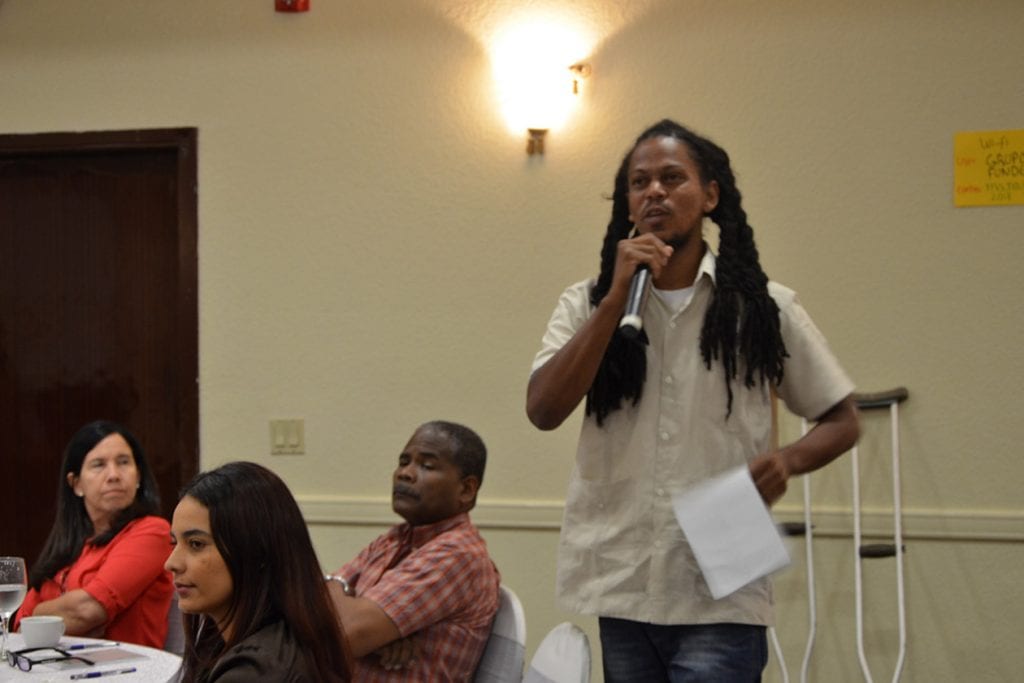The Media in Nicaragua Replicates Violence against Women
There are reporters who still use terms like “crimes of passion,” Maria Teresa Blandon, founder of the Feminist project “La Corriente” [“The Current”]
Por Elmer Rivas (Confidencial)
 HAVANA TIMES – The morbid reporting and the cruelty against women depicted in the communications media has become not only a kind of mass entertainment, but also an instrument that perverts our intercultural behavior, says George Henriquez, human rights activist and specialist in Gender and Ethnicity. Henriquez aired his thoughts as part of the “World Café on Gender” that was held in Managua last March 22.
HAVANA TIMES – The morbid reporting and the cruelty against women depicted in the communications media has become not only a kind of mass entertainment, but also an instrument that perverts our intercultural behavior, says George Henriquez, human rights activist and specialist in Gender and Ethnicity. Henriquez aired his thoughts as part of the “World Café on Gender” that was held in Managua last March 22.
For this activist and native of Bluefields on Nicaragua’s Atlantic Coast, misogyny “has a mestizo face.” However, the communications media turn a blind eye to that dimension of the violence, ignoring the differing ways that it plays out within ethnic groups.
According to Henriquez, those of African heritage have a more “matriarchal” culture in which the woman has economic and decision-making power in their families. This propitiates a less violent environment. However, the media coverage around issues of gender and violence has had a negative impact, with the replication of macho patterns of behavior. These patterns, common to the “mestizos from the western part of the country,” are being passed on to the Caribbean ethnicities, he notes.
“Violence against women isn’t viewed as a normal occurrence in communities of African heritage; further, it’s not common to see an Afro-Nicaraguan man with a girl of fifteen, although in the mestizo communities this is a norm,” the expert explained.
World Café on Gender
Henriquez participated in the “World Café on Gender,” the first national encounter to promote interchange between journalists and activist human rights advocates. The encounter was organized by the “Grupo Fundemos” and the Institute for Strategic and Public Policies Studies (IEEPP).

The gathering aimed at encouraging debate regarding the way that the traditional and alternative media focus on the topic of gender violence.
Feliz Maradiaga, IEEPP’s director, affirmed that the communications media in the country don’t present the topic of violence in an acceptable way. Because of this, they have wanted to get reporters from the different observation posts on violence together with organizations that advocate for human rights.
“Our aim is to promote more exchange between the human rights watchdogs and the reporters, so that the coverage of such news be the most optimal,” affirmed Maradiaga.
Maria Teresa Blandon, founder of the Feminist program La Corriente, feels that the journalists who cover news about violence aren’t paying heed to the voices of those who’ve received training on the subject. “For that reason, there are reporters who still talk of crimes of passion, of uncontrollable attacks of rage, of jealousy, depression, insanity,” she stated regretfully.
Blandon also explained that the lack of analysis and context in the news allows the continued re-victimization of those who have already suffered from femicide or any other type of violence.
Regarding the sexist language, Patricia Orozco, director of the radio program Onda Local [Local Waves], affirmed that in the eyes of the media, speaking about women means talking about “the mothers” and the “housewives.”
“Sexism makes women believe that their sole natural function is the maternal role,” she noted critically.
The challenge is to have the communications media conceptualize, understand and utilize correctly different terms such as machismo, micro-machismo, patriarchy, feminism and the distinct feminist currents in their journalistic coverage, added George Henriquez.
Alternative Voices
As Felix Maradiaga sees it, the social networks have become a space filled with emerging voices that are covering the problems “seriously and with adequate data”.

For this reason, communicators who aren’t part of the traditional media but are bloggers and generators of multimedia content were also invited to the gathering.
Maria Teresa Blandon noted that the social networks are “a form of auditing” for their users. “The social networks are helping us assure that critical voices are not silenced,” she noted.
Good Practices
Elizabeth Romero, reporter for the La Prensa newpaper; Argentina Olivas, director of the Matagalpa radio station Radio Vos; and Anagilmara Vilchez, editor of the Niu digital news site, were invited to discuss “Good Practices” in the coverage of topics involving violence and gender. The three panelists shared their experiences covering stories about women, victims, and survivors of the violence in Nicaragua.
Elizabeth, who specializes in reporting on topics of human rights and denunciations of police abuses, underlined the importance of coverage done right. Such responsible coverage can contribute to clarifying a case or avoiding that the perpetrators be left in impunity.
Anagilmara insisted that journalists must be more empathetic and self-educated in ethical norms. She noted the common errors that are committed in the portraits the media paints of women, and in the telling of their stories. Argentina, during her participation, added that creating alliances with the organizations involved can be vital for receiving training and actively supporting the victims of violence. All three coincided that the media priority, more than a scoop, should be the security and welfare of the victims.





